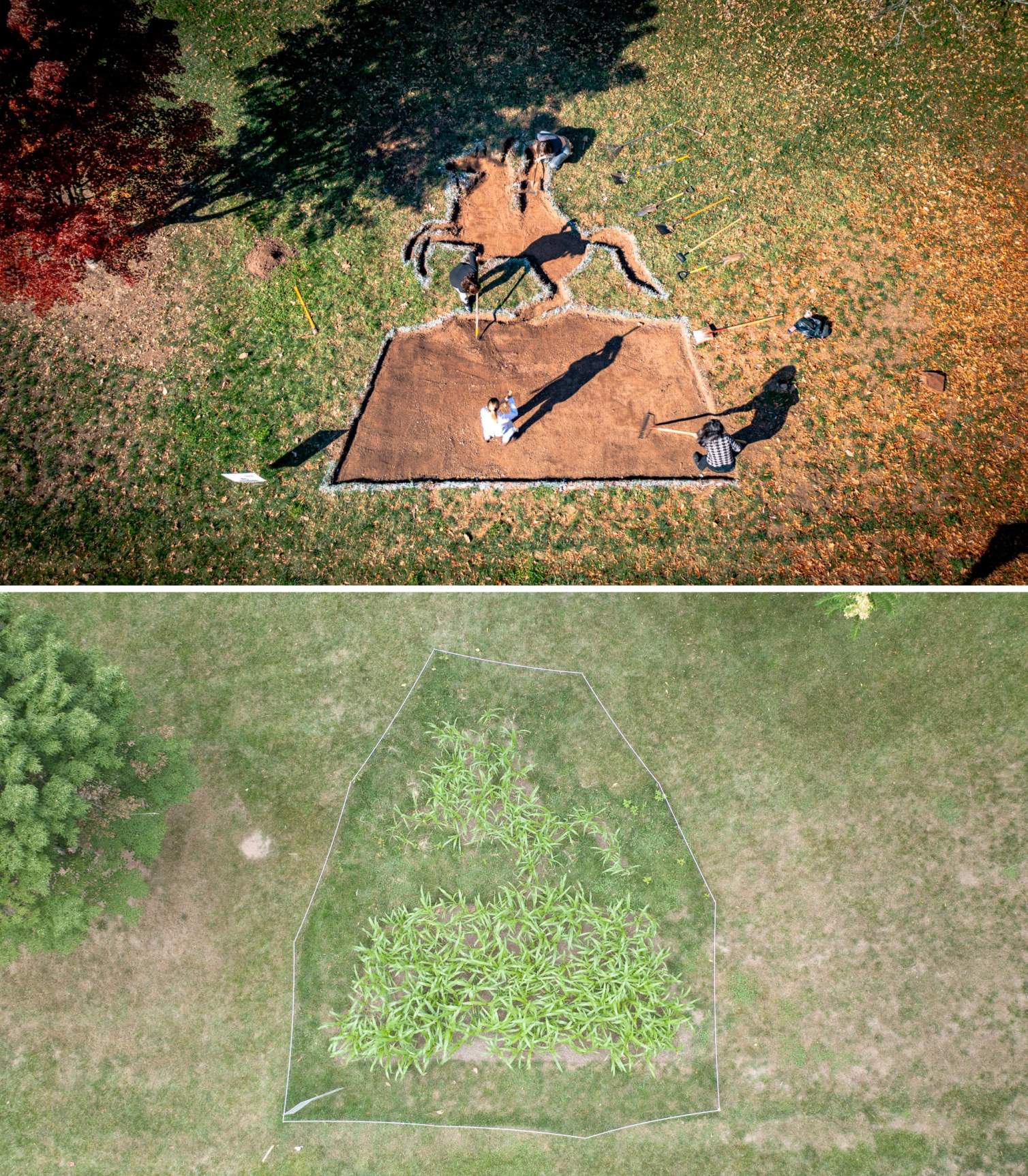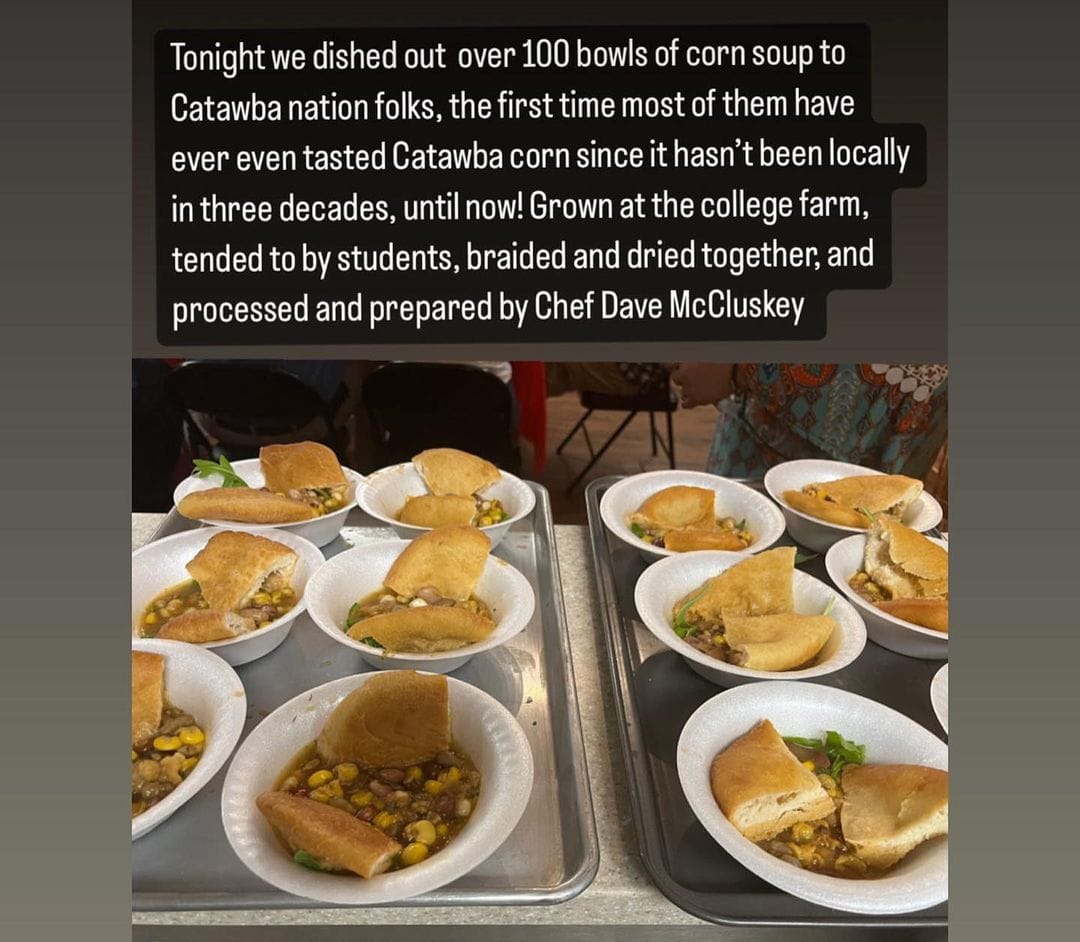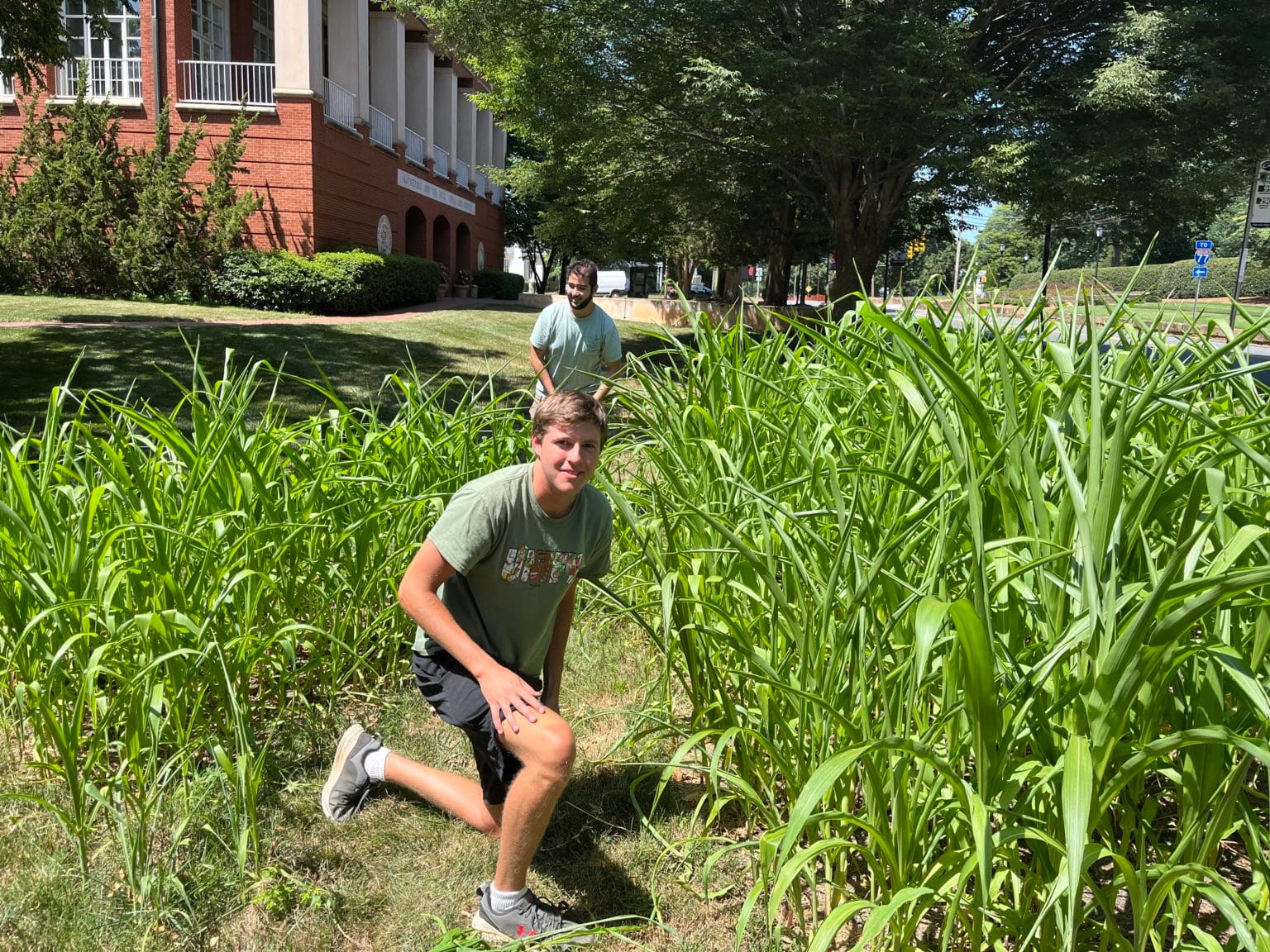Tlingit and Unangax̂ Native American artist Yéil Ya-Tseen, also known as Nicholas Galanin, has created a piece titled Unshadowed Land to celebrate the continued resilience and growth of Native Americans despite centuries of colonial violence and historical erasure. Unshadowed Land is a site-specific installation in Davidson College, North Carolina, done during the COVID-19 pandemic lockdowns. In the work, Galanin digs a hole in the ground following the outline of the Andrew Jackson monument in Lafayette Square, Washington DC. Despite being celebrated as the seventh president of the United States, Jackson was a highly problematic figure in American History, whose legacy includes rampant violence against Indigenous Americans and the enslavement of Black Americans.

Galanin used the outlined hole of the monument to grow Catawba corn, a traditional medicinal corn typically used as sustenance for the Catawba Indigenous communities of North Carolina. Colonialism, which comes with the capture and exploitation of indigenous land, has meant that this particular strain of corn was once thought to be extinct. However, a few years ago, scientists managed to recover and cultivate the strain for today’s agriculture.
Unshadowed Land by Nicholas Galanin, digging hole in the shape of Andrew Jackson equestrian sculpture. Video courtesy of Davidson College/YouTube.
Hence, Galanin saw it fitting to use Catawba corn as a symbol of the resilience of Native Americans. Just like the corn, they have managed to grow and persist, even on land that has been marked by colonists like Andrew Jackson. This is why Unshadowed Land by Nicholas Galanin is aligned with the United Nations Sustainable Development Goals of Reduced Inequalities and Life on Land.

As if proving Galanin’s hypothesis, all of the Catawba corn planted in Unshadowed Land successfully germinated, even after decades of it never being sowed. The success of the Unshadowed Land Catawba corn cultivation also gave Dr. Susana Wadygmar from Davidson College more data to aid her research on how climate change affects local corn cultivation; a study which will afford the Indigenous Catawba Nation peoples more food security. Galanin also ensured that the installation's first harvest was commemorated with a feast with the Catawba Nation community, some of which had never tasted what is so closely intertwined with their heritage.

Nicholas Galanin's Unshadowed Land is a powerful tribute to the resilience and persistence of Native Americans in the face of centuries of colonial violence, which persists to the present day. By transforming the symbolic outline of Andrew Jackson’s monument into a field of Catawba corn, Galanin highlights the endurance of both, Indigenous people and their traditions and heritage, despite the historical and environmental challenges they have faced. Moreover, Unshadowed Land not only preserves cultural memory but also contributes to scientific research on climate change and food security for the Catawba Nation. Finally, Galanin's work embodies a powerful message of survival, restoration and hope for future generations of Indigenous Americans.
Find out more about Unshadowed Land and other pieces by Nicholas Galanin on his Joan Mitchell Foundation page or Instagram @nicholasgalanin.
